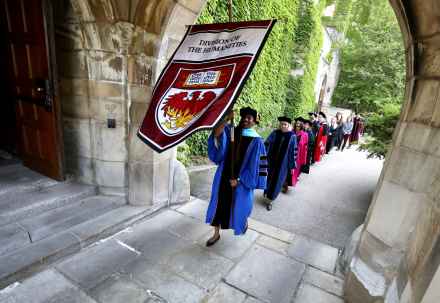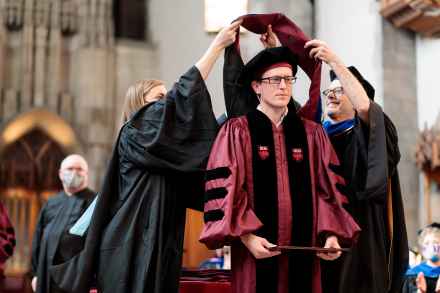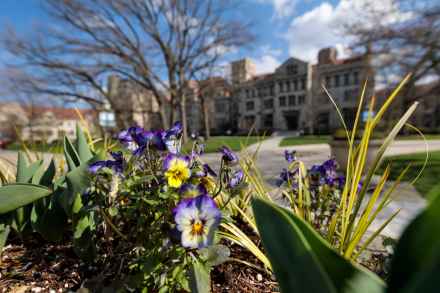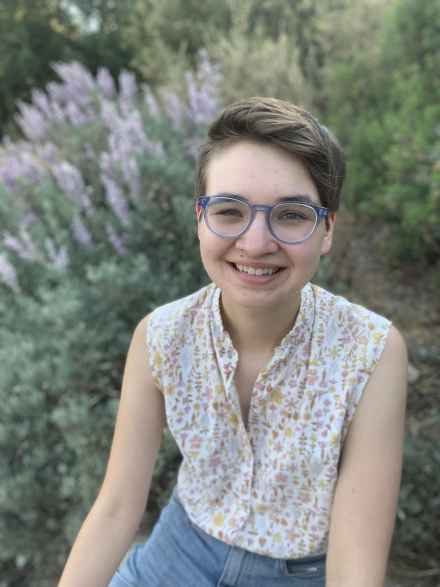Humanities Division Honors Graduate Students and Faculty at the 537th Convocation
Division of the Humanities graduates, faculty members, and the graduating students’ families and friends celebrated the 537th Convocation ceremony in Rockefeller Chapel from 4:30 to 5:30 p.m. on June 2, 2023. This is the last year that Anne Walters Robertson is serving as Dean of the Division of the Humanities, and the first year for the new Stuart Tave Course Design Awards honoring graduate students for exemplary course design in teaching undergraduate students.
“At every convocation, we are proud to celebrate the achievements in scholarship and teaching of our faculty and students,” said Anne Walters Robertson, Dean of the Division of the Humanities and the Claire Dux Swift Distinguished Service Professor in the Department of Music. “I am so pleased that at this, my final convocation as dean, we are launching a new award for excellence in course creation by graduate students: the Stuart Tave Course Design Award.”



